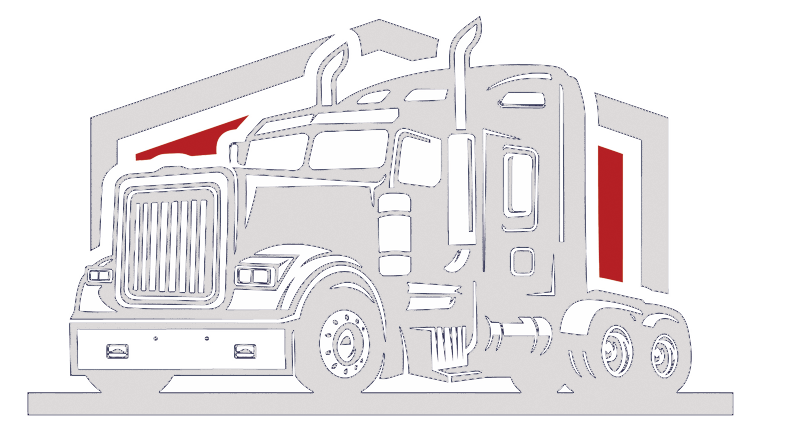Understanding the Power of Geographic Information Systems (GIS) Technology
GIS stands for Geographic Information System, and it’s revolutionizing how we interpret data. GIS allows us to collect, store, analyze, visualize, and share large amounts of information about different locations. It’s an invaluable tool in various industries – from urban planning to wildlife conservation – as it helps us make sense of complex geographical patterns and relationships. Whether you’re just getting started with GIS or are looking to get certified as a professional user, this article will give you all the need-to-know info before diving into the world of GIS.
What Is GIS?
Have you ever wondered how our cities plan their transportation networks? Or why certain areas experience more natural disasters than others? The answer lies within GIS technology. By combining layers of spatial data like topography maps, satellite imagery, and demographic statistics, GIS lets us uncover hidden insights that wouldn’t be possible without its powerful mapping capabilities. With these tools at your disposal, you can better understand any location on Earth – whether that means analyzing population density in an urban center or predicting potential disease outbreaks in rural communities.
No matter what industry you’re working in, having a solid foundation in GIS is essential to stay ahead of the curve. In this article, we’ll explore what exactly GIS is and how it works.
Definition Of Geographic Information Systems
GIS is like a powerful engine, driving the exploration and understanding of geographic information. Geographic Information Systems (GIS) are used to capture, store, analyze, and manage spatial data associated with location-based activities. It is an umbrella term covering many disciplines, including cartography, land surveying, photogrammetry, remote sensing, and geomatics – all concerned with capturing and managing data related to locations on or near the Earth’s surface. GIS technology enables us to visualize data in 2D maps and 3D models for applications such as navigation systems, urban planning, natural resource management, and marketing analysis.
It can be used to integrate different types of digital spatial data from multiple sources into single layers that represent real-world features like roads, rivers, and buildings. This allows us to answer questions about our environment that would otherwise be impossible to discover without this mapping technology. For example: what areas have the most crime? What neighborhoods have experienced the most significant population growth over time? These are just some ways that GIS helps us better understand our surroundings and make informed decisions based on its insights.
Uses Of GIS Technology
GIS technology has a wide range of uses and is used in many different industries. It’s most commonly used for mapping applications, but its capabilities go far beyond that. GIS data analysis enables spatial analysis, which can be used to make decisions related to public safety, urban planning, land use management, location intelligence, infrastructure development, and more.
Organizations across the globe are leveraging GIS technology to gain insights into their operations and better serve their customers. For example, businesses with multiple locations can analyze customer behavior patterns by creating heat maps based on store visits or product purchases. This type of location intelligence helps them understand consumer preferences and improve marketing campaigns accordingly. Governments also use this information to plan services such as transportation routes and emergency response systems.
GIS is an invaluable tool for trucking companies. It can help them plan and optimize routes, ensuring they get the most efficient use of their trucks and drivers. GIS can also be used to analyze traffic patterns to help inform decisions, such as which routes to use, when to leave, and the best times to deliver goods. Additionally, GIS can help trucking companies better understand their customer base and market areas, allowing them to make more informed decisions about where to locate and service customers. Finally, GIS can be used to track and manage driver performance, allowing trucking companies to ensure their drivers are meeting safety regulations and delivering goods in a timely manner.
In short, there are countless ways in which organizations today are making use of GIS technology to make informed decisions about their activities and operations. By gaining insight into how people interact with their environment through spatial analysis tools like those found in GIS software packages, organizations can easily gain an advantage over competitors who don’t have access to such powerful technologies.
Components Of GIS Software
GIS technology is becoming increasingly popular, with an estimated 25 million people using GIS software worldwide. This substantial number of users makes it clear that understanding the components of GIS software is essential for those who want to make full use of its functionality. In this section, we will explore the various parts of a GIS system and how they work together to provide powerful mapping capabilities.
The architecture of most GIS software consists of four main components: data management, analysis tools, map display, and user interface. Data management includes functions such as importing existing data sets into the system or creating survey-based data from scratch. Analysis tools allow users to measure distances between points on a map, analyze spatial relationships between features, and identify patterns in their geographic area of interest. Map display enables users to visualize their results by rendering layers onto a map in different formats like shapes and images. Finally, the user interface provides access to these three other components through menus and commands, which allows them to control what information appears on their maps and how it looks.
In addition to these core elements, there are also many applications built specifically for working with GIS systems. For example, some programs offer real-time tracking capabilities so that you can monitor where people or objects are moving geographically over time, while others specialize in aerial imagery processing, which gives viewers detailed satellite images of any location on Earth. Other uses include 3D modeling, which helps scientists understand terrain better, or web mapping services which enable interactive exploration online without needing specialized software installed locally.
No matter what type of project you’re working on, having access to advanced GIS technologies can greatly improve your workflow efficiency and help create more accurate visualizations faster than ever before possible. With all the diverse functionalities available today, it’s no surprise that so many businesses rely heavily upon GIS software when making important decisions about resources and operations throughout their organizations.
Benefits And Challenges Of GIS
GIS technology is a powerful tool that provides geographic data and allows users to map, analyze, visualize, and interpret it. With the help of GIS software, businesses can make informed decisions based on accurate spatial information. Despite its many advantages, there are some challenges associated with using GIS systems.
One of the greatest benefits of GIS is its ability to manage large amounts of data quickly and accurately. This makes it an invaluable resource for organizations that rely heavily on location-based services or need to track multiple variables simultaneously. Additionally, GIS gives users the ability to create detailed maps with sophisticated graphic elements such as symbols and labels. These features enable them to communicate complex ideas in easy-to-understand ways visually.
On the other hand, there can be difficulties associated with managing GIS data effectively. Without proper training and guidance from experts in this field, individuals may not know how best to use their system or understand all its features and capabilities. Furthermore, creating high-quality maps requires significant time investments since each element needs to be carefully configured before being printed or shared online. Finally, maintaining up-to-date information is key if users want their results to remain valid; however, due diligence is often required if data sources change frequently or contain errors.
Overall, GIS offers numerous benefits when used correctly but also presents certain challenges that should be considered beforehand. By familiarizing oneself with the capabilities of the system and taking necessary precautions while working with geographic data sets, users will be able to leverage the full potential of this powerful technology more effectively.
Conclusion: What Is GIS?
GIS has become an invaluable tool for businesses, organizations, and individuals to understand their world. With GIS, any type of data can be used to discover patterns and trends previously hidden or not noticed. Furthermore, a GIS doesn’t have to cost as much as many people think— plenty of free options are available if you know where to look. Additionally, the capabilities of a GIS go beyond what traditional maps offer: they allow us to uncover more profound insights into our environment that we wouldn’t be able to grasp with just a map alone.
In order to use a GIS effectively, one must possess certain skills, including cartography, spatial analysis, and computer programming. It may take some time to learn these new abilities, but it will undoubtedly pay off in the long run due to all the amazing opportunities that come with this technology. Moreover, when working with sensitive information such as personal location data or government records, security considerations should also be taken into account; encryption tools and other safety measures help keep your data secure from malicious actors.

